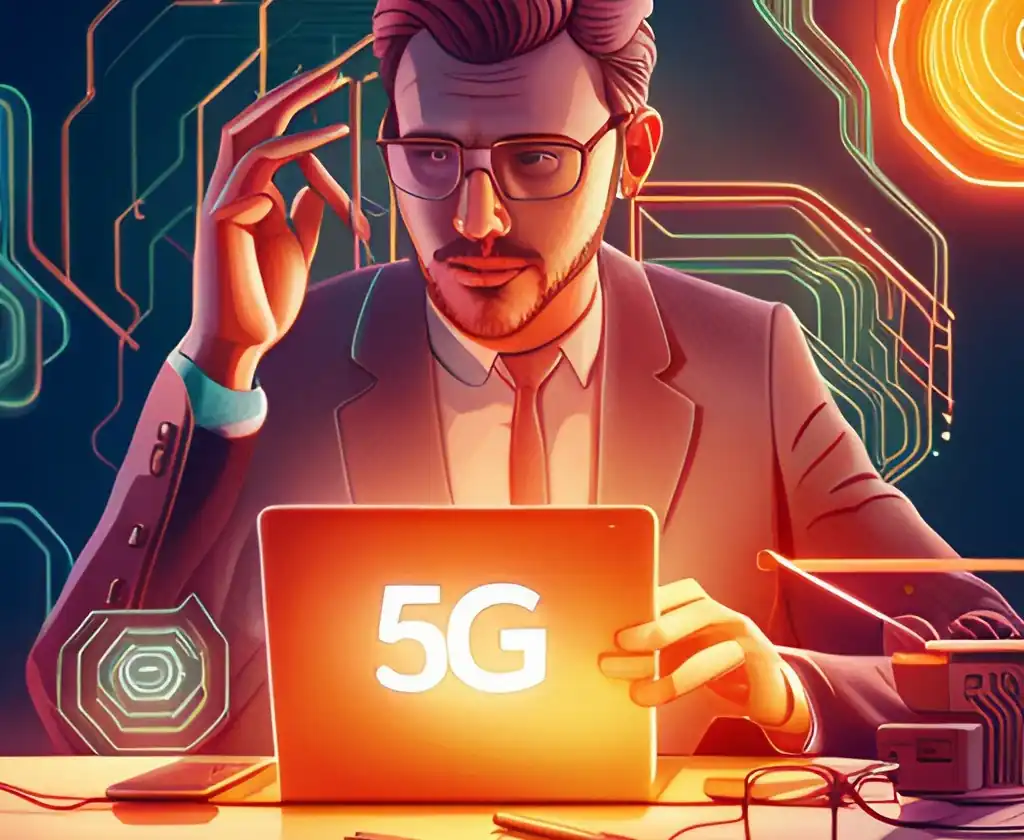It’s time to dive into the pivotal role of 5G in remote work, and how it promises to reshape our work-from-home norms and experiences.
- 5G, the fifth generation of wireless technology, is set to redefine our daily interaction with technology, with a particular emphasis on the realm of remote work.
- This cutting-edge technology is not just an upgrade; it’s a total transformation that will fundamentally alter the remote work landscape.
However, some of the most significant changes will be seen in the way we work.
The introduction of 5G networks will fundamentally alter remote work, transforming how we communicate, collaborate, and engage with our work environments.
- Exploring 5G Technology: Key Features
- The Transformative Role of 5G in Remote Work
- Fueling Innovation in Remote Work Technologies
- Addressing Concerns with 5G Innovations in Remote Work
- Case Studies
- Additional Articles on Remote Work
This article serves as a companion piece to our previously published work:
- Future Of Remote Work (Adapt Quickly)
- Maintaining Work-Life Balance in a Remote Work Environment
- Adapting To The Shift: The New Norms of Remote Work.
We recommend reading these pieces in sequence to gain a comprehensive understanding of the role of 5G in remote work and how to adapt to them effectively.
Exploring 5G Technology: Key Features
Before exploring deeper into the role of 5G in revolutionizing remote work, let’s briefly acquaint ourselves with the distinctive features of this game-changing technology.
5G Technology: Unparalleled Speeds and Negligible Latency
5G, or Fifth Generation technology, represents the next phase in mobile network technology. Unlike its predecessors, it promises much more than faster download and upload speeds.
Here are some of its key attributes:
- Increased Capacity: 5G networks can handle a larger number of devices simultaneously. This is crucial in a remote work setting where multiple devices might be connected at the same time.
- Low Latency: Latency refers to the delay before a transfer of data begins following an instruction for its transfer. 5G drastically reduces this lag, ensuring real-time communication.
- Higher Speed: 5G brings broadband-equivalent download speeds over mobile networks. This allows for seamless video conferencing, instant file transfers, and uninterrupted streaming, which are crucial for remote work.
- High-Definition Video Calls: 5G provides fluid screen sharing, and rapid file transfers will mirror the experience of working in a physical office, reducing the perceptible distance between remote team members.
Key Takeaways: 5G is more than a technology upgrade; it’s a transformative shift that offers increased capacity, lower latency, and higher speed, thereby promising to significantly enhance the remote work experience.
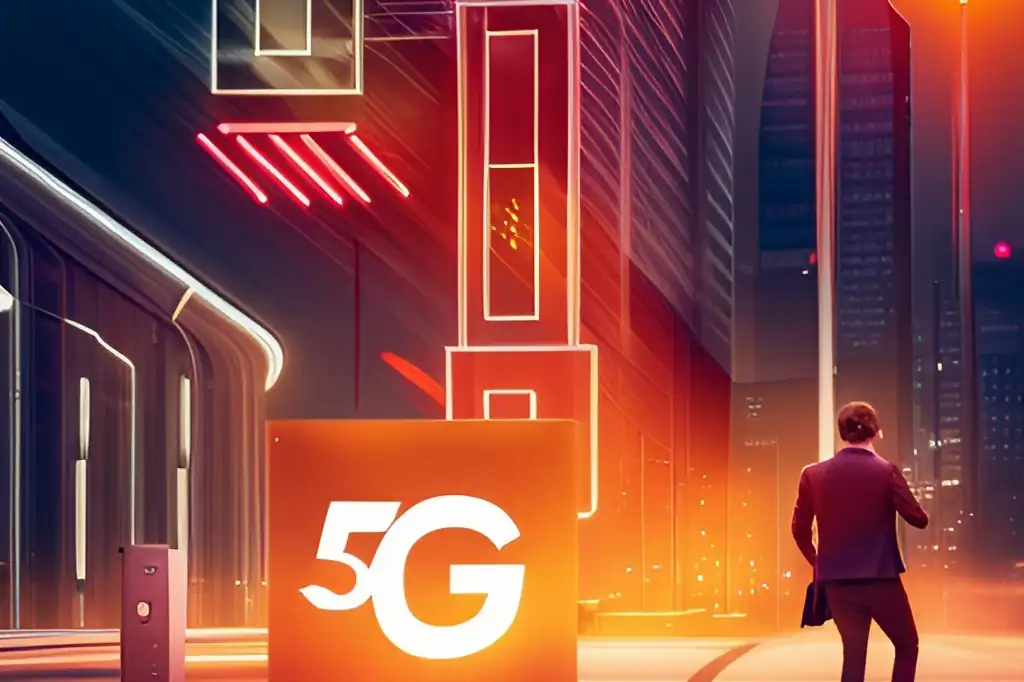
Consistent and Ubiquitous Connectivity
- Irrespective of where you choose to work, 5G ensures an unwavering, lightning-fast connection. Whether you’re at home, at a cafe, or on a moving train, your productivity will no longer be at the mercy of inconsistent internet services.
- This unprecedented level of connectivity will empower remote workers with true flexibility and mobility.
Reinforced Security
- As remote workers access sensitive company resources offsite, 5G’s enhanced security becomes crucial.
- It’s designed to provide a highly secure environment, substantially mitigating the risks associated with remote access and data transfer.
Enabling Cutting-Edge Technologies
- The introduction of 5G expands the horizons for incorporating advanced technologies like Virtual Reality (VR) and Augmented Reality (AR) into remote work.
- Imagine attending a meeting in a virtual room, or using AR to interact with data in a way that simplifies complex information. These applications could soon become commonplace in the remote working world, thanks to 5G.
- IoT (Internet of Things) devices will also see a surge in adoption, resulting in remote work environments that are more intuitive and connected than ever before.
Key Takeaway: The introduction of 5G technology promises to redefine remote work by offering lightning-fast speeds, ubiquitous connectivity, enhanced security, and the ability to leverage advanced technologies.
While we’ve only scratched the surface of its potential, it’s clear that 5G stands to power a paradigm shift in our work-from-home experience.
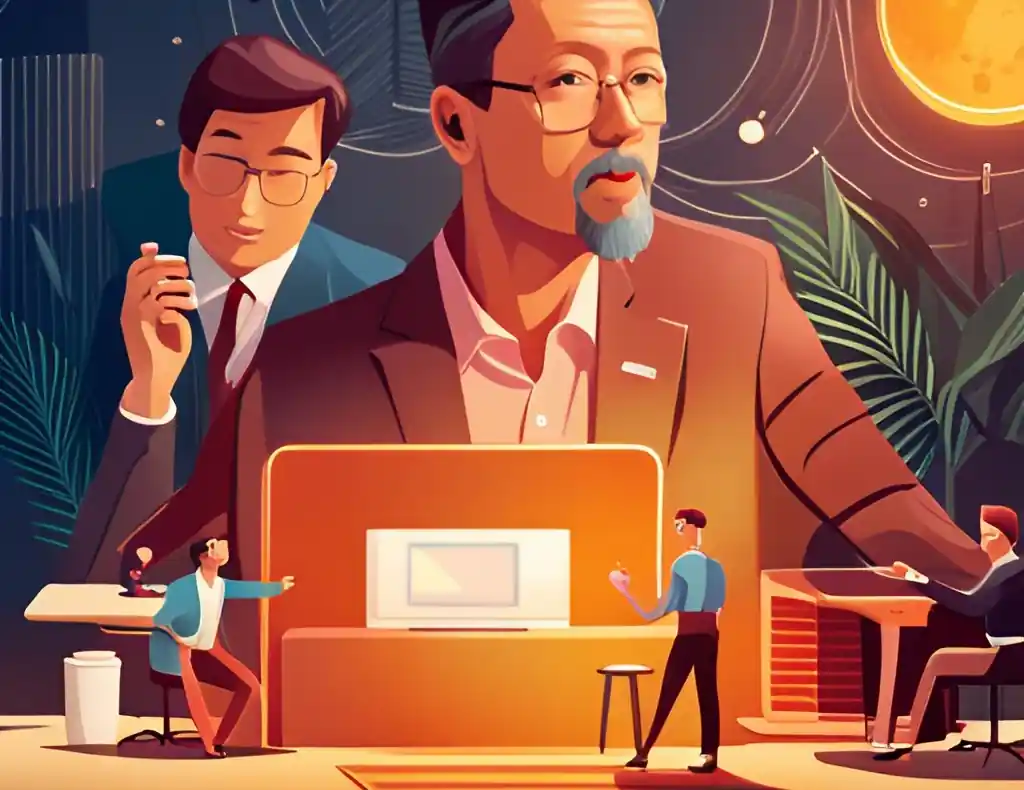
The Transformative Role of 5G in Remote Work
With an understanding of 5G’s key features, let’s now explore its potential applications in a more connected, engaged, and efficient workforce.
Supercharged Remote Collaboration
Imagine a day in your remote work life powered by 5G: You’re kicking off the day with a team meeting.
A Seamless Start:
You start your day with a team meeting. The high-definition video call, powered by 5G’s lightning-fast speeds and virtually zero latency, feels as if you’re in the same room with your colleagues, regardless of the physical distance.
The voices are clear, screen shares occur in real-time, with no lag or interruptions.
Smooth Workflow:
Next, you’re working on a significant project that requires frequent large file transfers.
5G lets you send a hefty file to your teammate with a single click, and it arrives in their inbox within seconds.
Long upload and download times, a common remote work challenge, becomes a thing of the past.
Enhanced Collaboration:
In the afternoon, you have a brainstorming session with your team.
Instead of a typical video call, you all log into a virtual reality platform.
Using your VR headsets, you and your team are virtually present in the same room, interacting with data in a 3-dimensional virtual space.
The interactions are so real and immersive, it feels like you’re physically moving objects and post-it notes around, enhancing the collaborative experience to levels unthinkable in the traditional video conferencing setup.
Key Takeaway:
A typical workday powered by 5G promises to redefine remote collaboration, making it more interactive, efficient, and engaging. This transformative technology brings colleagues closer together, irrespective of their physical location, signifying a paradigm shift in remote work experiences.
This is not a scene from a sci-fi movie; this is what a typical workday could look like in a world powered by 5G.

Reimagining Training and Onboarding
Now let’s imagine the onboarding process in a 5G-powered remote work environment. As a new recruit, your onboarding is no longer limited to video calls and reading through piles of documents.
An Immersive Introduction:
Your first day begins with an immersive VR tour of the virtual office, powered by 5G’s low latency and high-speed connectivity.
You move around the workspace, interacting with simulations of your role and responsibilities.
This hands-on, interactive approach helps you grasp the workings of your new role faster and more effectively than any manual or video can deliver.
Engaging Training Sessions:
Next, you participate in a training session. Instead of passively watching a video, you’re logged into an AR platform where data comes alive.
Through your AR glasses, you witness complex concepts unfolding before your eyes, making the learning process more engaging and relatable.
Real-time Mentorship:
Throughout the day, you interact with your mentor and teammates on a high-definition video call. Despite being in different parts of the world, the flawless video quality, powered by 5G, makes it feel as though they’re right next to you.
Immediate feedback and real-time interaction make the training process more effective and enjoyable.
Key Takeaway:
5G’s potential to revolutionize the training and onboarding processes is immense. By enabling VR and AR technologies, it allows for a more immersive, interactive, and engaging learning experience for new hires.
Instead of passively absorbing information, recruits will be able to actively engage with and explore their new roles, setting the stage for a more productive and satisfying remote work experience.

Boosting Productivity and Increasing Employee Satisfaction
With the advent of 5G, let’s visualize how productivity and employee satisfaction can be greatly transformed in the realm of remote work.
Eliminating Barriers:
Your workday begins, and while you’re situated in the comfort of your home, you have full access to all the necessary resources, just as if you were in an office.
With the robust 5G connectivity, you can rapidly download or upload large files, stream high-quality videos, and access data-intensive applications with virtually zero latency.
The usual technical interruptions that can halt your workflow are eliminated, paving the way for a smooth, uninterrupted workday.
Increasing Efficiency:
Throughout the day, you use various IoT devices to streamline your tasks. With 5G’s enhanced connectivity, these devices communicate seamlessly with each other, automating routine tasks and saving valuable time.
The increased efficiency paves the way for you to focus on higher-level, strategic work.
Enhanced Employee Satisfaction:
At the end of the day, you reflect on the productivity of your workday. You had the tools and technology to perform your work efficiently, without any frustrating technical glitches.
The satisfaction of a productive work day contributes to overall job satisfaction, enhancing your engagement and commitment to your role.
Key Takeaway:
5G has the potential to significantly boost productivity and employee satisfaction in remote work settings. Through seamless connectivity, efficient IoT device communication, and the absence of technical interruptions, it lays the groundwork for a smooth, efficient, and satisfying workday.
The result is a more engaged and committed workforce, ready to embrace the future of remote work.
Strengthening Data Protection and Privacy
5G’s robust security features will ensure safer remote access to company resources, thereby mitigating potential data breaches and cyber threats.
This will provide companies the confidence to enable more remote work options, leading to a more diverse and inclusive workforce.
Fortified Security Measures:
As you begin your workday, you log into your company’s system.
With the robust security features powered by 5G, you can securely access necessary resources without worrying about potential data breaches.
5G’s enhanced encryption methods guarantee the safety of sensitive data, enhancing your confidence to work remotely.
Defending Against Cyber Threats:
Throughout the day, you engage with various online platforms.
Behind the scenes, 5G’s advanced security protocols are working tirelessly to mitigate potential cyber threats, ensuring the integrity of your online interactions.
The advanced cybersecurity measures powered by 5G offer a secure environment for remote work, instilling trust among employees and employers alike.
Enabling a Diverse and Inclusive Workforce:
At the end of the day, you sign off with peace of mind, knowing your work and data are secure.
This heightened security reassures companies, allowing them to confidently offer more remote work options, thereby promoting diversity and inclusivity.
5G not only fortifies security but also opens up new possibilities for workforce diversity and inclusion.
Key Takeaway:
5G’s exceptional security features promise a safer remote work experience. It provides advanced protection against cyber threats, ensuring secure data access and communication.
This fortified security allows companies to confidently offer more remote work options, leading to a more diverse and inclusive workforce.
Smarter Work Environments
With the proliferation of IoT devices facilitated by 5G, expect smarter and more intuitive remote work environments.
The automation of routine tasks and the creation of interconnected digital workspaces will lead to increased efficiency and a better work-life balance for employees.
Streamlining Work Processes:
As you start your day, you activate several IoT devices. Powered by the expansive reach of 5G, these devices interconnect and communicate, creating a seamless and efficient digital workspace.
The 5G-enabled IoT ecosystem automates routine tasks, allowing you to concentrate on more complex work.
Enhanced Work-Life Balance:
Throughout the day, you find that automation and easy access to resources have significantly reduced your workload. This efficiency leaves you with ample time to maintain a healthy work-life balance.
The increased autonomy and flexibility offered by 5G-enhanced smart environments contribute positively to your overall work-life balance.
Embracing the Future of Work:
At the end of the day, you acknowledge the transformative effect 5G has had on your work environment. The automation and intuitive design of your workspace have made your work more enjoyable and efficient.
5G, by enabling smarter and more responsive work environments, is redefining the future of remote work.
Key Takeaway:
The proliferation of 5G can significantly improve remote work environments by facilitating the seamless integration of IoT devices.
This interconnectivity, coupled with advanced automation capabilities, streamlines work processes and enhances work-life balance, paving the way for the future of work.
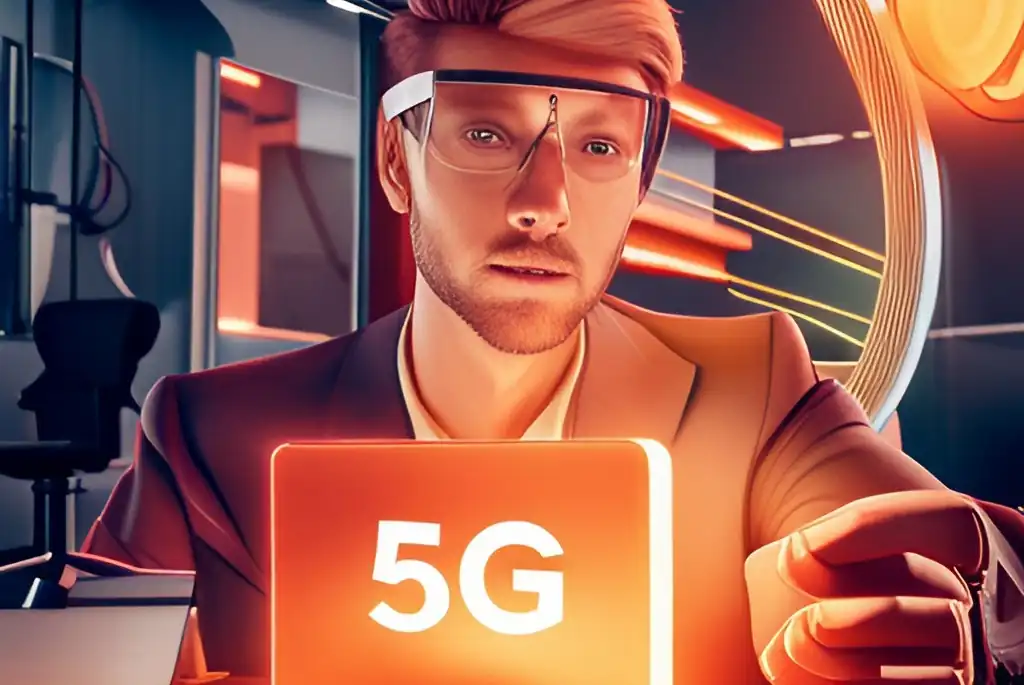
Fueling Innovation in Remote Work Technologies
As we look to the horizon, the advent of 5G technology promises to be a catalyst for a new wave of innovation in remote work solutions.
The ultra-fast, high-capacity, and low-latency network will spur the development of applications and tools that were previously unthinkable with conventional connectivity.
Virtual and Augmented Realities:
Firstly, as we mentioned above, the high bandwidth and low latency of 5G have the potential to make virtual and augmented reality more accessible and practical for remote work.
Imagine being able to collaborate with colleagues in a virtual workspace or use augmented reality to visualize complex data sets in real time.
5G could usher in an era where remote work is not just about working from home, but working from anywhere – real or virtual.
AI and Machine Learning:
Secondly, 5G’s capacity to handle vast amounts of data in real time will supercharge the capabilities of AI (Artificial Intelligence) and Machine Learning.
This could lead to the creation of AI-driven personal assistants, predictive data analysis, and more sophisticated automation of tasks, radically enhancing productivity.
5G will empower AI and Machine Learning tools to function at unprecedented levels, transforming how we work remotely.
Seamless Cloud Computing:
Finally, the ultra-fast speeds and high reliability of 5G will allow for seamless cloud computing, making it possible for remote workers to access and use heavy applications that require real-time collaboration.
This includes complex graphic design software, video editing tools, and real-time collaborative platforms.
With 5G, the cloud becomes an even more integral part of remote work, breaking down barriers to collaboration and efficiency.
Key Takeaway:
5G will be a driving force for innovation in the realm of remote work, enabling virtual and augmented reality applications, powering AI and Machine Learning tools, and facilitating seamless cloud computing.
As 5G networks become more ubiquitous, the line between working in-person and remotely will blur even further, heralding a truly transformative shift in how we perceive and conduct work.

Addressing Concerns with 5G Innovations in Remote Work
While we cannot overlook the transformative potential of 5G technology in redefining remote work, it is equally important to address the potential downsides or concerns associated with this shift.
Digital Divide
The advent of 5G can potentially exacerbate the existing digital divide, particularly in rural and underprivileged regions that lack access to 5G networks.
These areas risk being further marginalized, creating a disparity in remote work opportunities.
Businesses and governments need to take proactive measures to ensure that the benefits of 5G technology are accessible to all, thereby bridging this digital divide.
Infrastructure Requirements
The deployment of 5G networks necessitates extensive upgrades in infrastructure at both individual and societal levels.
These upgrades come with significant costs and logistical challenges that need to be thought through carefully.
Businesses need to assess these costs against the potential benefits of 5G-enabled remote work, while governments should consider investing in infrastructure to enable widespread 5G deployment.
Data Privacy
The integration of 5G with IoT devices and AI technologies in remote work could potentially lead to serious data privacy concerns.
As the amount of data being transferred increases, so does the risk of data breaches and cyber-attacks.
It’s incumbent upon businesses to ensure robust data protection measures are in place to safeguard the privacy and security of their employees’ data.
Health Implications
The potential health implications of 5G radiation have been a topic of debate.
While 5G operates at a higher frequency, the amount of radiation exposure remains within international safety standards.
Nevertheless, businesses should monitor ongoing research into the health effects of 5G and ensure the well-being of their remote workforce.
Regulatory Hurdles
The deployment of 5G networks may face regulatory hurdles as it requires harmonization of spectrum allocations, standards, and policies across different countries.
Businesses should stay abreast of these potential regulatory challenges and plan their 5G strategies accordingly.
Environmental Impact
The environmental impact of deploying and maintaining 5G networks is another critical concern.
Increased energy consumption and e-waste associated with 5G technology need to be mitigated through green ICT strategies and sustainable practices.
Key Takeaway:
While the transition to 5G brings substantial benefits for remote work, it is not without challenges. Businesses and governments need to address concerns related to the digital divide, infrastructure requirements, data privacy, health implications, regulatory hurdles, and environmental impact.
Case Studies
To fully grasp the implications of 5G-enabled remote work, it would be beneficial to explore case studies of companies that have successfully leveraged 5G technology. These practical examples can provide valuable insights into overcoming potential challenges and optimizing the benefits of 5G for remote work.
Case Study 1: Verizon’s 5G Lab
Verizon, one of the leading telecommunications companies, has been leveraging 5G to enhance remote work through its 5G Labs. The company uses AR and VR for collaboration among remote employees. The high bandwidth and low latency of 5G have made real-time collaboration in a virtual space a reality, fostering innovation and productivity within the company.
Key Takeaway: Verizon’s success illustrates how businesses can transform remote work experience through the application of 5G in AR and VR.
Case Study 2: Microsoft and AT&T Collaboration
In a groundbreaking partnership, Microsoft and AT&T have been exploring the potential of 5G in cloud computing.
AT&T has been using Microsoft’s Azure cloud services to bring computing closer to 5G networks, thus reducing latency.
This has enhanced AT&T’s ability to process vast amounts of data in real-time, paving the way for sophisticated applications such as AI and Machine Learning in remote work.
Key Takeaway: The Microsoft and AT&T collaboration demonstrates the capacity of 5G to revolutionize cloud computing in the realm of remote work.
These case studies illuminate the transformative power of 5G in remote work and provide insights into how to harness its potential effectively. However, as 5G technology is still in its nascent stage, more case studies and research are required to fully understand its long-term impact and benefits for remote work.
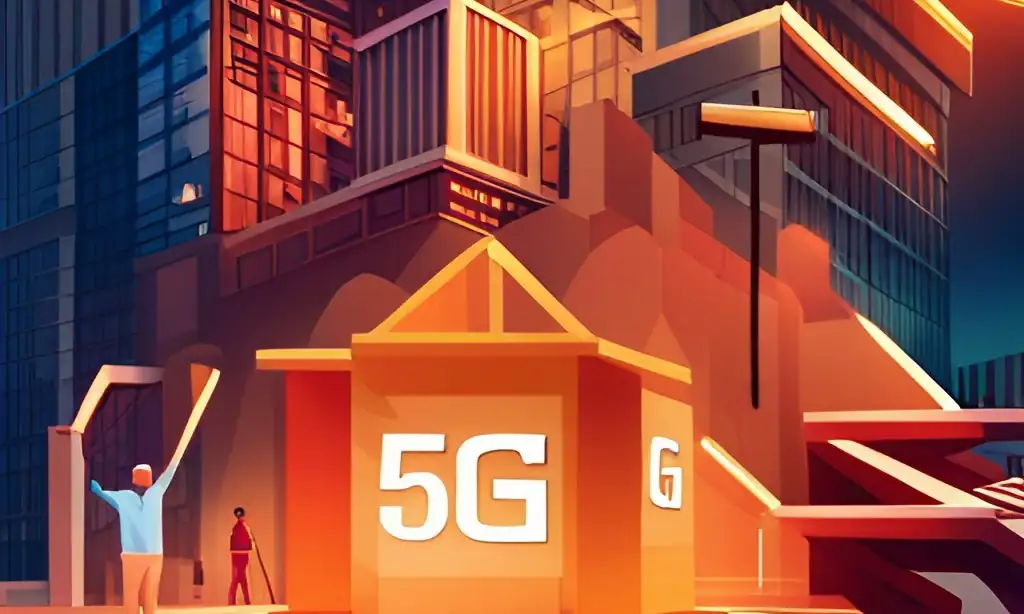
Recap and Conclusion
The role of 5G in remote work is reshaping the future of work by enabling a more connected, collaborative, and efficient workforce. Its high-speed, low-latency capabilities facilitate real-time collaboration and effective integration of advanced technologies such as AI and IoT in the work environment.
However, it’s crucial to address the potential challenges that come with this transition, including the digital divide, infrastructure requirements, data privacy concerns, health implications, regulatory hurdles, and environmental impact.
As we move forward, businesses and governments should adopt a balanced approach, harnessing the opportunities offered by 5G technology while proactively addressing the associated challenges. This will ensure a seamless and inclusive transition to a 5G-enabled remote work landscape. The future of work is here, and it is 5G.
Additional Articles on Remote Work
I hope you found the insights shared in this article valuable. This is the fourth installment in my in-depth series on remote work. If you’d like to explore more about this topic, I encourage you to read the prior articles in this series:
- Future Of Remote Work (Adapt Quickly)
- Maintaining Work-Life Balance in a Remote Work Environment
- Adapting To The Shift: The New Norms of Remote Work.
I’m confident these articles will provide you with a deeper understanding and practical strategies to succeed in the remote work era.

J.S. is the owner, content creator, and editor at Upgrades-and-Options.com. I’ve worked in the IT and Computer Support field for over 20 years. The server hardware in my computer labs has mostly been IBM, but I’ve supported Dell, HP, and various other hardware. In addition, as part of my lab administrator responsibilities, I’ve learned, supported, and repaired/upgraded network hardware such as Cisco routers and switches. READ FULL BIO >>

